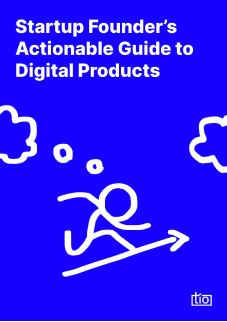Common Mistakes with Digital Products: What is Overbuilding?

It all starts with an idea. You have one, well, now you need validation. You already saw what’s coming, right? If you don’t, read why you should start with an MVP and how to build one first. This week, we will talk about not-so-good concepts about building an MVP. Overbuilding is one of the most common mistakes when it comes to building an MVP and it is something you should definitely have in your mind when building a digital product.
This article aims to dive into it.
What is Overbuilding?
Overbuilding is a term that is often used to refer to working too much on development and putting an unnecessary effort into building. By too much we mean spending time on building unwanted, unvalidated or nice to have features. Overbuilding an MVP is an oxymoron if we consider that the sole purpose of the MVP is building with minimum features yet, it is possible. There are many traps in MVP development that a product team might fall into, but overbuilding is one of the worst since it goes against the nature of the MVP approach.
There are different types of overbuilding. For example,if you don’t prioritize your features well and choose to develop too many features for a version, this can make your product a victim of overbuilding. This can be hard to avoid since you really want to make a great product and have a big product vision. But basically, you need to identify which functions are not crucial for your customers and remove them from your MVP backlog, for now.
Since the essence of an MVP is its plain functionality, you should avoid adding features that are not absolutely necessary for providing the core of your product to customers. If a feature doesn’t add any real value or drastically contribute to the product, don’t add it.
Always remember that many of the features you are building may never be used by customers, ever and that’s why you are building an MVP. This doesn’t mean they’re not valuable; it just means they’re not valuable to your target audience at this point in time.
Why Does Everybody Overbuild?
As you start to build a minimum viable product, figuring out what to build first can be daunting. Should you focus on making your product great or should you get your product out there as early as possible?
It’s all about balance, obviously, duh. Overbuilding your MVP can be a big mistake. Besides it costs extra sources, it also adds complexity and makes it harder for you to understand what your customers really want. But why? More importantly, how to prevent it? Root causes could be found most commonly at:
- Scoping.
- Prioritizing.
So, overbuilding can be prevented by a well-constructed roadmap and a clear vision.
How to Avoid Overbuilding?
Here is how you would build your product: first, define the problem that you want to solve and how you want to solve it. Second, place yourself in the perspective of your users: what do they need? And third, make decisions as to what steps are required for you to achieve your goal. Note that this list may not be set in stone, but it should give you a clear idea of your priorities. Now build 1-3 features and see if there is interest from people using your product. If yes, keep adding features until you find yourself in a “product-market fit”. If not, go back and rethink your strategy. But if you overbuilt at any point, it’s like, you lost the game. Of course you can always start from the beginning again.
The secret to avoiding overdevelopment is to assemble the right team to determine how much functionality is needed to achieve certain goals. The lean approach also helps because it allows quick and accurate changes to be made when new features need to be added or old ones need to be completely overhauled.
To Sum,
In order to build an MVP, you need to find a balance between the end product and required functionality. You need to achieve a testable feature that has real value to the customer. This is where customers will want to use your solution over the alternatives available. Knowing this, you need to focus on ensuring that you aren’t wasting time building features of which your product doesn’t require.
Overbuilding is a common mistake with MVPs as we often add features without any specific reason and only because they are nice to have. But remember that what is nice to have for you might not be essential for your users.
tio
9/8/2022
